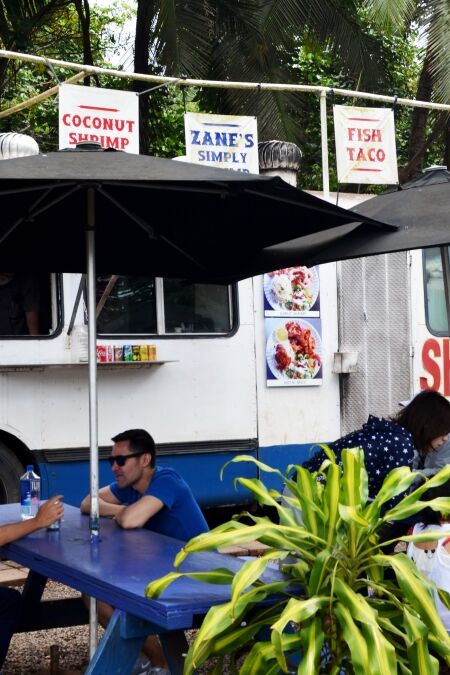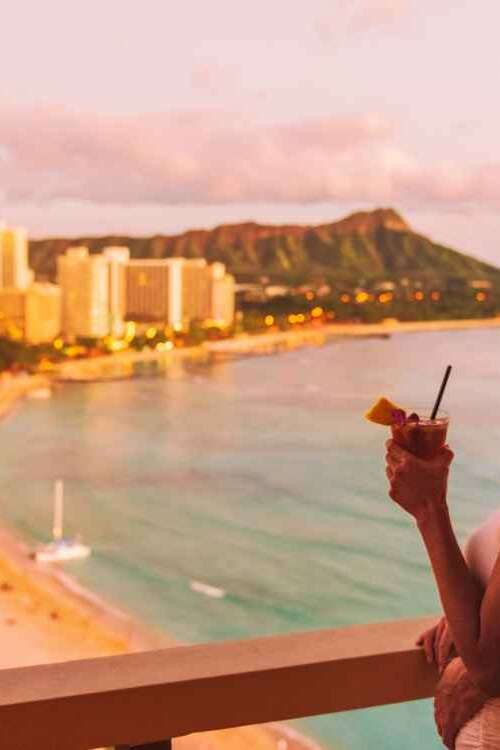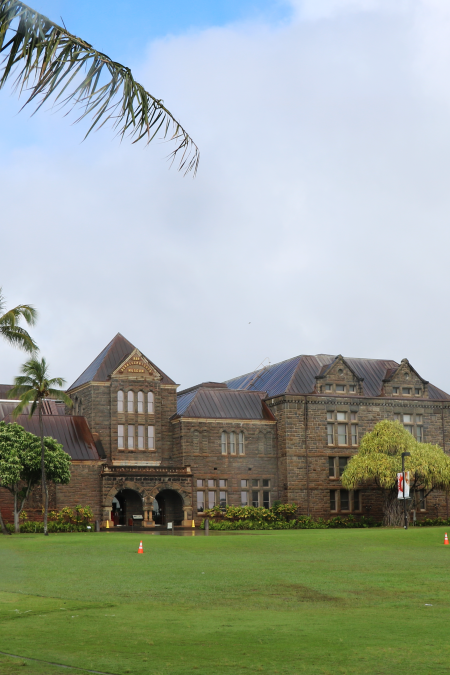The Pacific Tsunami Museum in Hilo, Hawaii, offers an in-depth exploration of the powerful and often devastating tsunamis that have shaped the Hawaiian Islands’ history. This museum provides visitors with a unique opportunity to understand the science behind tsunamis, the impact of historical events, and the importance of preparedness in a region prone to these natural disasters. This travel guide will help you make the most of your visit to this educational and impactful institution.
Highlights
- Explore interactive displays and engaging exhibits that provide a comprehensive history of tsunamis in the Pacific region.
- Participate in educational programs and guided tours that offer in-depth knowledge about tsunami science, safety measures, and the impact of these natural disasters on local communities.
- Watch compelling documentaries that showcase the powerful forces of tsunamis and the resilience of the people affected by them.
- Enjoy family-friendly activities, including hands-on exhibits and interactive learning stations designed to engage visitors of all ages.
- The museum is conveniently located near other attractions such as Hilo Farmers Market and Liliuokalani Gardens, allowing for a full day of exploration.
History
Founding Inspiration
The Pacific Tsunami Museum was born from the collaborative efforts of Dr. Walter Dudley and Jeanne Branch Johnston. Dr. Dudley, while collecting survivor stories for his book “Tsunami!” in 1988, recognized the need for a dedicated space to preserve these accounts. In 1994, tsunami survivor Jeanne Branch Johnston saw the need for such a museum in Hilo. With strong community support, they co-founded the museum, initially opening a small facility that later moved to its current location.
Historical Significance
The museum’s home, a historic building constructed in the 1930s by the Bishop National Bank of Hawai’i, survived both the 1946 and 1960 tsunamis. Designed by renowned architect C.W. Dickey, the building’s resilience and iconic Art Deco style add a layer of historical depth and significance to the museum.
Early Tsunami Events
The first major tsunami of the 20th century to strike Hawai’i originated from the Kamchatka peninsula. This event was significant as Dr. Thomas A. Jaggar observed firsthand the seismic relationship between earthquakes and tsunamis, setting the stage for future research and understanding.
The 1946 Tsunami
On April 1, 1946, a massive 8.6 undersea earthquake in the Aleutian Islands triggered a tsunami that devastated Hilo. Known as the April Fool’s Day tsunami, it claimed 159 lives and destroyed the neighborhood of Shinmachi. Despite the widespread destruction, the Bishop Bank building endured, symbolizing resilience.
The 1960 Tsunami
Triggered by a 9.6 earthquake in Chile on May 23, 1960, the resulting tsunami reached Hilo, causing significant loss of life and property damage, with 61 fatalities. This tragic event played a pivotal role in shaping tsunami history by promoting research, preparedness, and redevelopment plans for the Hilo waterfront.
Community and Museum Growth
In 1997, on the 37th anniversary of the 1960 tsunami, First Hawaiian Bank donated its Kamehameha Branch building to the museum. This generous donation provided a permanent site, and the museum opened its doors to the public in June 1998. Over the years, the museum has expanded its exhibits and programs, emphasizing global tsunamis and the importance of preparedness.
A Symbol of Resilience and Education
Today, the Pacific Tsunami Museum stands as a beacon of resilience and education. It continues its mission to raise awareness, promote preparedness, and honor the memory of those affected by tsunamis. Through engaging exhibits, educational programs, and preservation efforts, the museum remains a vital resource for the community and visitors alike, fostering a safer and more informed future.
Moving Forward
The museum, having faced its share of struggles, stands strong as a testament to the enduring spirit of the community and the lessons learned from the past. Each exhibit and story reinforces the vital mission of promoting tsunami awareness and preparedness. Join us in embracing this journey towards a safer, more informed world, guided by the history and knowledge preserved within the Pacific Tsunami Museum.
Exhibits and Displays
Overview of Permanent Exhibits
The Pacific Tsunami Museum offers a comprehensive look into the history and science of tsunamis through its permanent exhibits. These displays provide detailed information about the causes, effects, and aftermath of tsunamis, with a special focus on their impact on Hawaii. Visitors can explore a variety of artifacts, photographs, and interactive tools that bring the stories of these natural disasters to life.
Key Exhibits: 1946 Hilo Tsunami and 1960 Chile Tsunami
Among the Pacific Tsunami Museum’s most notable exhibits are those dedicated to the 1946 Hilo Tsunami and the 1960 Chile Tsunami, showcasing original footage, photographs, and personal accounts that highlight the local and global impacts of these events. The museum’s extensive archive, enriched by international donations, preserves Hawaii’s social and cultural history through a vast array of images, oral histories, videos, documents, artifacts, and maps. Notable collections include historic images depicting tsunami aftermaths, original video footage from the 1946 tsunami, and over 600 first-hand survivor accounts, all of which offer valuable and personal insights into these natural disasters.
Interactive Displays and Educational Tools
The museum’s interactive displays and educational tools offer an engaging way to learn about tsunamis. One highlight is the NOAA Tsunami Map Viewer, an interactive tool that allows visitors to explore tsunami evacuation zones in Hawaii. Additionally, the Interactive Hilo Bay Tsunami Map provides a unique way to view historical photos of Hilo after the 1946 tsunami, simply by moving a mouse cursor across the map. These tools not only educate but also emphasize the importance of preparedness.
Temporary and Traveling Exhibits.
In addition to its permanent collections, the Pacific Tsunami Museum hosts temporary and traveling exhibits that offer fresh perspectives and new information about tsunamis and related topics. These exhibits provide opportunities for repeat visitors to discover something new and stay informed about the latest research and developments in tsunami science.
Educational Programs and Resources
The Pacific Tsunami Museum offers a variety of educational programs and resources, including workshops and tailored programs for schools and groups, lectures, and guest speaker events. The museum’s extensive research resources and archives provide valuable materials for in-depth study, while virtual tours and online resources make learning accessible to a global audience, ensuring that the important lessons about tsunamis reach as many people as possible.
Planning Your Visit
The museum is open daily from 10 am to 4 pm, with extended hours on Tuesdays from 9 am to 4 pm. Admission fees are $15 for general visitors, $10 for seniors and military, and $5 for children aged 6-17 and Kama’āina. The museum welcomes group visits and offers guided tours, making it an excellent choice for field trips or family reunions. Groups ranging from 10 to 45 people can schedule a visit to receive a detailed 30-45 minute presentation covering topics such as the science of tsunamis, Hilo history, or personal survivor accounts, followed by a self-guided exploration of the museum. For smaller groups, an introduction by a docent or museum employee can be provided. Ensure to book your group visit in advance to secure your preferred date and receive a confirmation and group contract via email.
Tips for Visiting
- Plan: Check the museum’s opening hours and admission fees before your visit.
- Book Group Tours: Schedule group visits in advance to secure your preferred date and time.
- Allow Enough Time: Plan to spend at least an hour at the museum to fully explore the exhibits.
- Join a Guided Tour: Enhance your visit with a guided tour for deeper insights and detailed presentations.
- Engage with Interactive Displays: Take advantage of the museum’s interactive tools for a more engaging experience.
- Read Reviews: Look up visitor testimonials to set your expectations and get tips from past visitors.
- Explore the Archives: Don’t miss the chance to delve into the extensive archives of images, videos, and survivor stories.
- Visit Nearby Attractions: Plan your visit to include other points of interest in Hilo to make the most of your trip.
- Follow Museum Etiquette: Respect the exhibits and follow any guidelines provided by the museum staff.
Best Times to Visit
The best times to visit the Pacific Tsunami Museum are during weekdays, especially in the mornings when it opens at 10 am, to avoid the crowds and have a more relaxed experience. Visiting during these times allows for ample opportunity to explore the exhibits and participate in guided tours without the hustle and bustle of peak hours. Additionally, weekday visits often provide more chances to interact with museum staff and ask questions, enhancing your overall experience.
Nearby Attractions and Activities
While visiting the Pacific Tsunami Museum, explore other fascinating points of interest in Hilo, such as the Lyman Museum and Mission House, the beautiful Liliuokalani Gardens, the vibrant Hilo Farmers Market, and the impressive Rainbow Falls. A suggested itinerary for a day in Hilo could start with a morning visit to the Pacific Tsunami Museum, followed by a stroll through Liliuokalani Gardens, and then a trip to the Hilo Farmers Market to enjoy local produce and crafts. Next, visit the Lyman Museum to learn about Hawaii’s natural and cultural history, and finally, take a scenic drive to Rainbow Falls to enjoy its breathtaking beauty.
Dining and Accommodation Recommendations
After exploring the Pacific Tsunami Museum, unwind with a meal at Cronies Bar & Grill for a casual dining experience, or enjoy the local flavors at Jackie Rey’s Ohana Grill Hilo. For accommodations, consider staying at Howzit Hostels Hawaii for a budget-friendly and social environment, or the Wild Ginger Hotel for a charming and comfortable stay. These dining and lodging options will ensure a pleasant and convenient visit to Hilo.
Frequently Asked Questions (FAQs)
The Pacific Tsunami Museum is a museum in Hilo, Hawaii, dedicated to educating the public about tsunamis through exhibits and survivor stories.
The Pacific Tsunami Museum is located at 130 Kamehameha Ave, Hilo, Hawaii.
The Pacific Tsunami Museum is open Tuesday through Saturday from 10 AM to 4 PM.
Visitors to the Pacific Tsunami Museum can explore exhibits on the history of tsunamis in Hawaii, scientific explanations of tsunamis, and personal stories from tsunami survivors.
Yes, the Pacific Tsunami Museum offers interactive exhibits and educational programs that are suitable for all ages, making it a family-friendly attraction.
Yes, the Pacific Tsunami Museum offers guided tours that provide in-depth information about the exhibits and the history of tsunamis in the region.
How to Get There
By Car
To reach the Pacific Tsunami Museum by car, start by navigating to Hilo, Hawaii. If you’re coming from Hilo Airport, head south on Highway 11, then take the exit toward Hilo. Continue straight onto Kīlauea Avenue and follow it until you reach the intersection with Waianuenue Avenue. The museum will be located on your right at 130 Kamehameha Ave. There is parking available nearby, making it convenient to stop and visit.
By Bus
If you prefer to travel by bus, the Hele-On Bus provides public transportation options in the Hilo area. You can catch the bus at various locations throughout town; make sure to check the Hele-On Bus schedule for the most suitable route and times. The nearest bus stop to the Pacific Tsunami Museum is located a short walk away, allowing for easy access to the museum’s entrance.
Surf Through Time at the Pacific Tsunami Museum
The Pacific Tsunami Museum is a must-visit for anyone eager to explore the powerful and transformative history of tsunamis in Hawaii. With its captivating exhibits, interactive displays, and personal survivor accounts, the museum offers a unique and educational experience that brings the science and stories of these natural disasters to life. Plan your visit today and immerse yourself in the compelling narratives that have shaped the Hawaiian Islands.




